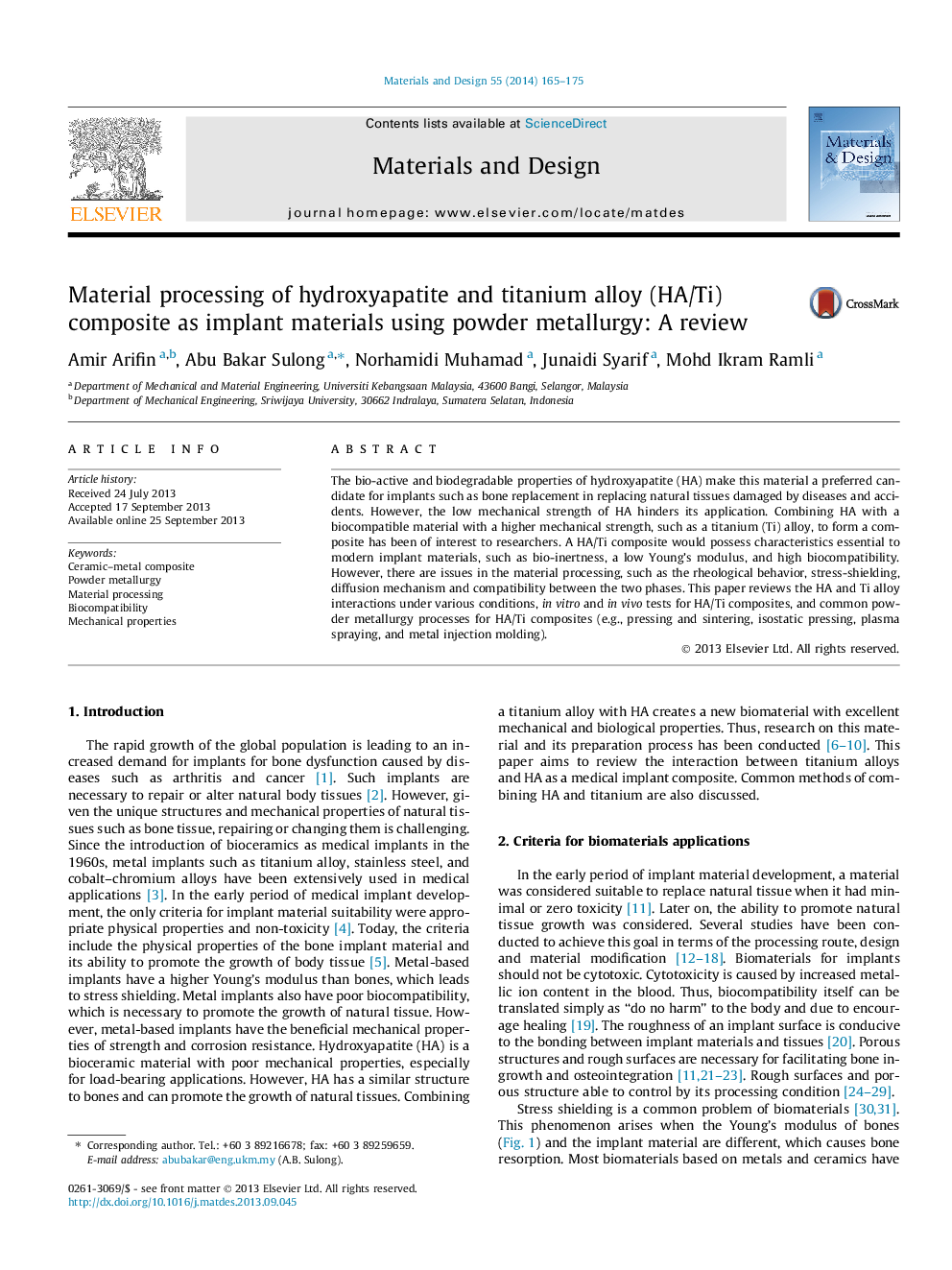| کد مقاله | کد نشریه | سال انتشار | مقاله انگلیسی | نسخه تمام متن |
|---|---|---|---|---|
| 829522 | 1470342 | 2014 | 11 صفحه PDF | دانلود رایگان |

• Review on physical and chemical interaction of Ti–HA at processing steps.
• Critical criteria to be biomaterial are been summarized.
• Critical issues in fabrication methods of Ti–HA composites.
• Advantages and disadvantages of those fabrication methods.
The bio-active and biodegradable properties of hydroxyapatite (HA) make this material a preferred candidate for implants such as bone replacement in replacing natural tissues damaged by diseases and accidents. However, the low mechanical strength of HA hinders its application. Combining HA with a biocompatible material with a higher mechanical strength, such as a titanium (Ti) alloy, to form a composite has been of interest to researchers. A HA/Ti composite would possess characteristics essential to modern implant materials, such as bio-inertness, a low Young’s modulus, and high biocompatibility. However, there are issues in the material processing, such as the rheological behavior, stress-shielding, diffusion mechanism and compatibility between the two phases. This paper reviews the HA and Ti alloy interactions under various conditions, in vitro and in vivo tests for HA/Ti composites, and common powder metallurgy processes for HA/Ti composites (e.g., pressing and sintering, isostatic pressing, plasma spraying, and metal injection molding).
Journal: Materials & Design - Volume 55, March 2014, Pages 165–175